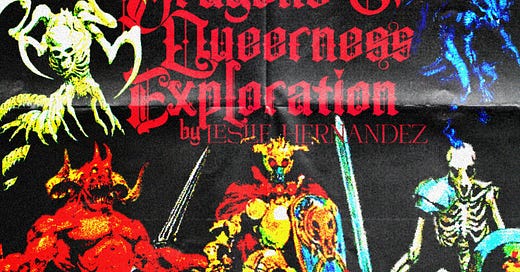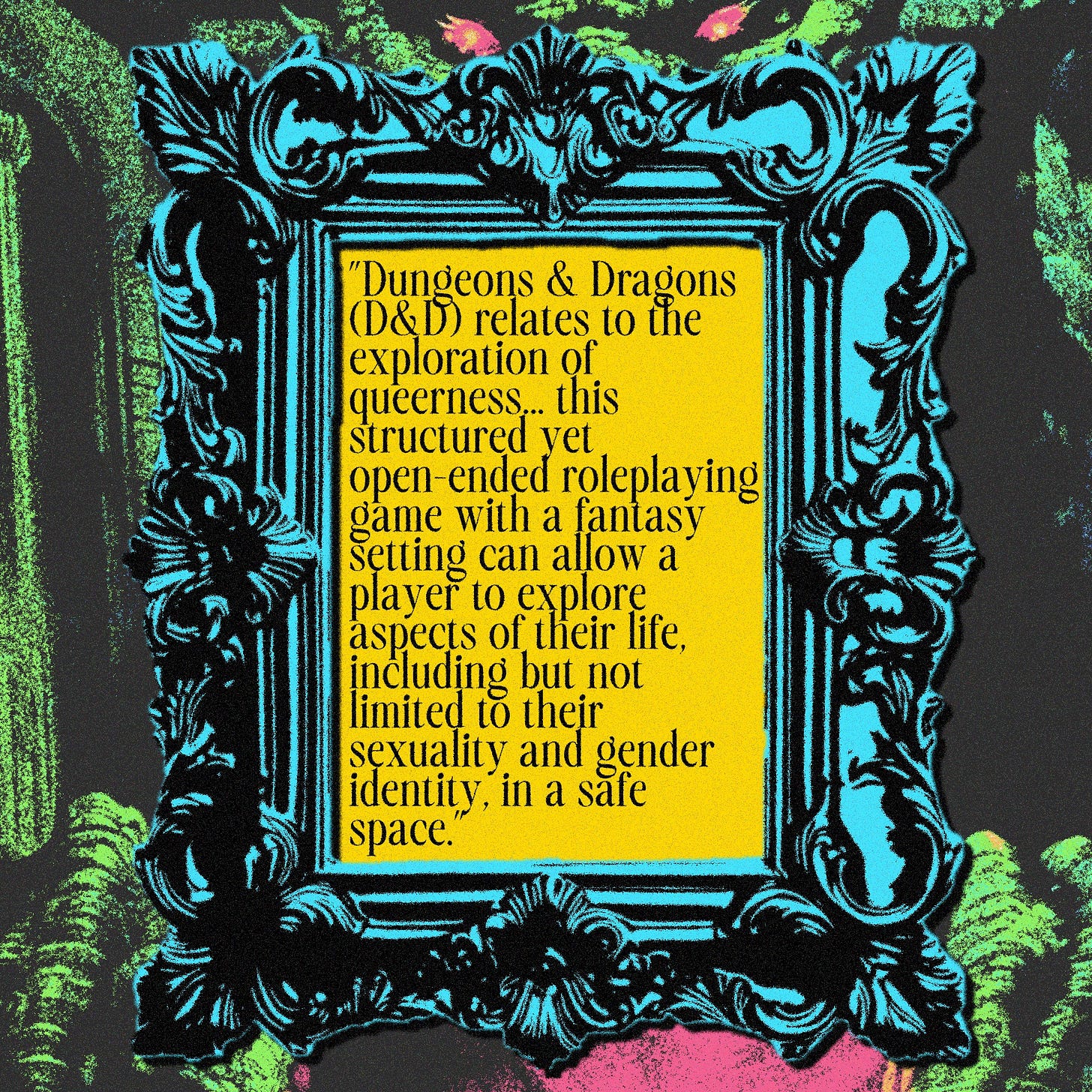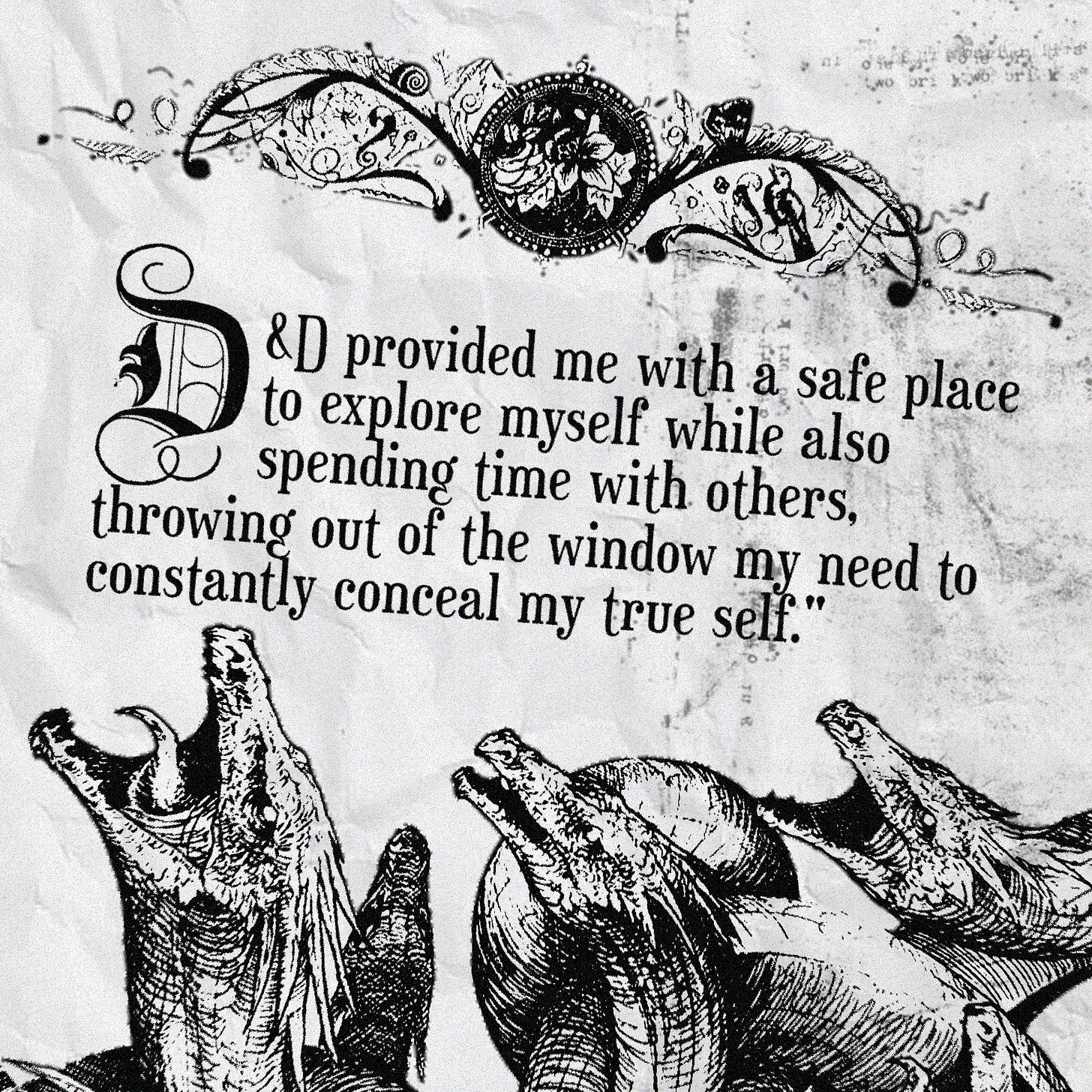Dungeons, Dragons, and Queerness Exploration
written by Leslie Hernandez, graphics by Dan Aries
You might be wondering how exactly Dungeons & Dragons (D&D) relates to the exploration of queerness. Well, this structured yet open-ended roleplaying game with a fantasy setting can allow a player to explore aspects of their life, including but not limited to their sexuality and gender identity, in a safe space. People can take this route because they might be too scared or shy to explore them in their real life, or they might not be in a safe environment to do so.
Thefirst, and arguably most important, step in D&D is to get to know your party. The party being the group of people you will be playing with. Getting to know them can give you a sense for whether this could be a safe space for your exploration through your character. The D&D community is a very accepting and LGBTQ+ friendly place, but it is always smart to get to know your fellow players before accidentally putting yourself in an unsafe situation. The Dungeon Master (DM) is usually one of the first people you have contact with, so you can let them know your intentions and have an important conversation with them. This conversation regarding your exploration can happen before anything is finalized or when presenting your character to the DM.
The most fun step, in my humble opinion, is creating your character! Here you can go wild; there’s so many classes, sub-classes and races that anything and everything can be created—from a drag king halfling bard that performs in taverns every night and uses his sickening moves to demolish his enemies, to a trans woman dwarf paladin with broken oaths to gods who betrayed her trust. Even a lesbian elf rogue who rebels against the strict traditions of her home to be with her beloved is a possibility of a character that can be played. These are just some examples; the possibilities are truly endless.
Then, the exploration part comes into play as the campaign unravels. Character dynamics become clearer, and with proper conversations beforehand, even romances between players’ characters or a player’s character and a non-playable character (NPC) may bloom. Situations may also be presented where your character gets to talk about their gender identity, and you as the player can take these opportunities to express your own thoughts, doubts or even experiences in a safe environment.
I know all of this from my own experiences playing D&D in the last three years. I had always had an interest in the game, curiosity and fascination causing me to bring it up any time someone mentioned how they liked fantasy. I struck gold when I met my best friend, someone as interested and fascinated with D&D as I was. We talked on and off about being interested in joining a party somehow, and if the opportunity ever came we would do so together. Then, one random day he invited me to a brand new campaign that he would be DMing. He gave me all the information I needed to know and then sent me on my merry way to create a character.
I began creating my beloved Ianonia, a bisexual tiefling rogue with a typical tragic backstory. By this point in my life, I had gone through my chaotic journey with understanding and accepting my sexuality so I, of course, made my character bisexual. Yet, as many of us know, after the sexuality crisis comes the gender crisis. That is where I found myself, a bit confused and lost as to what exactly my gender was but scared to explore by myself in a place where I could face pushback from the world around me, So, I took the chance to explore through Ianonia. I gave her she/they pronouns and declared them to be nonbinary. I took this chance as I knew the party was entirely composed of members of the LGBTQ+ community and fierce allies. I never made my intention of exploring this gender identity for myself through the character explicitly clear, but alas, my DM clocked me the moment I presented Ianonia to him.
What came after that? A safe space to explore my gender identity in a fantasy setting. While I got to have a sense of how it felt to be referred to via she/they pronouns, Ianonia got to kick ass and take names. As time went on, I slowly became comfortable enough to let my closest friends and family members know that I identify myself as a nonbinary person (demigirl to be more specific), who uses she/they pronouns.
D&D provided me with a safe place to explore myself while also spending time with others, throwing out of the window my need to constantly conceal my true self. I encourage others to do the same if they have the opportunity, but to heed my advice of making sure it is a safe space to do so.








